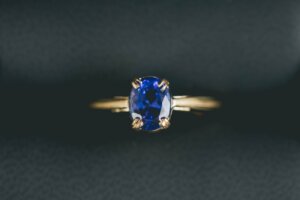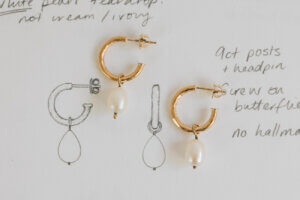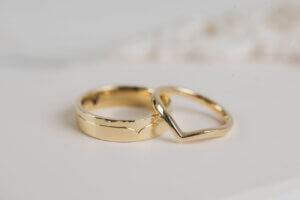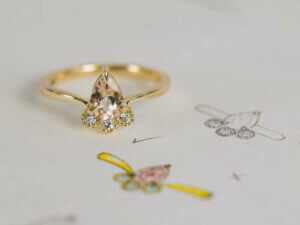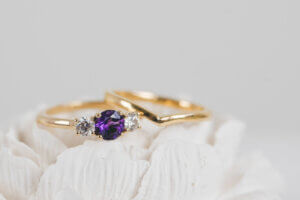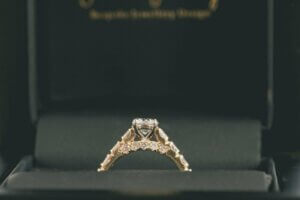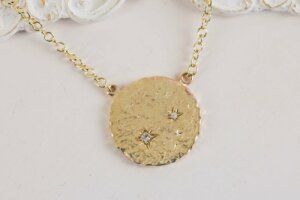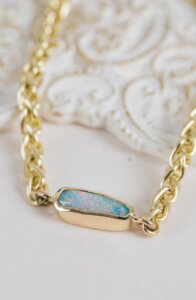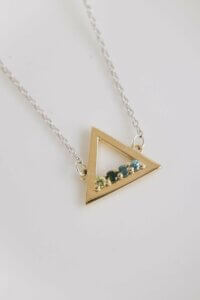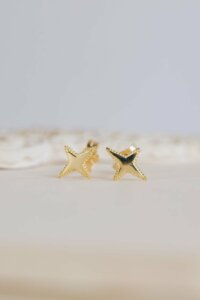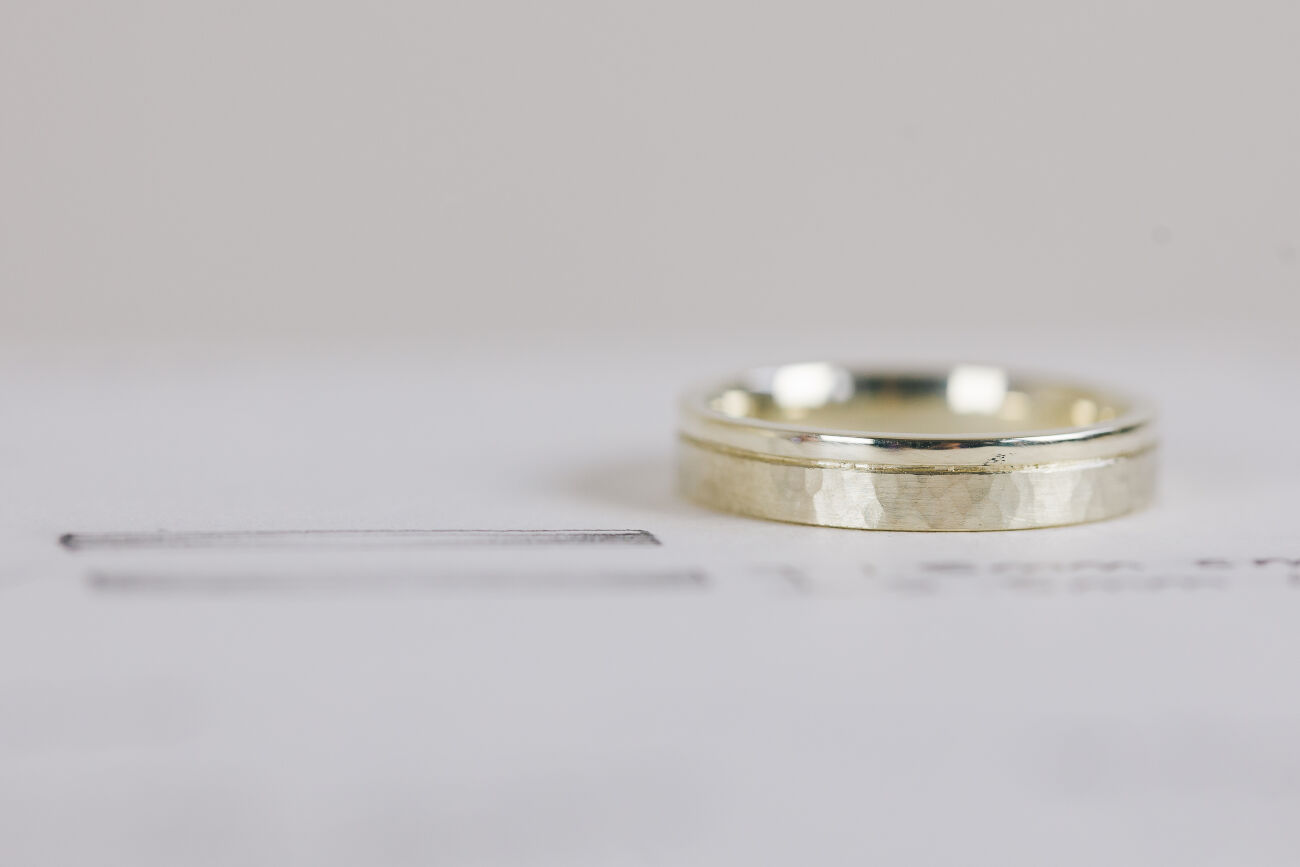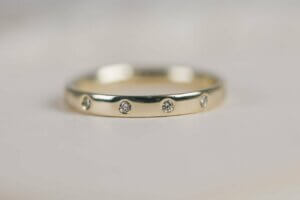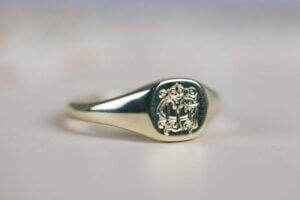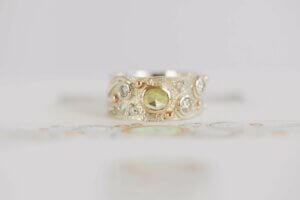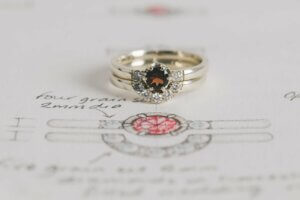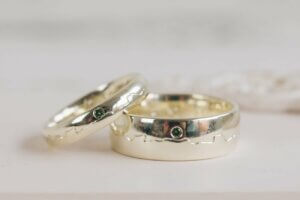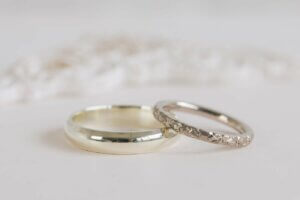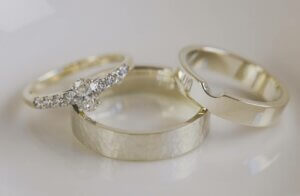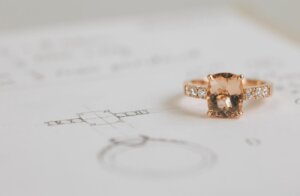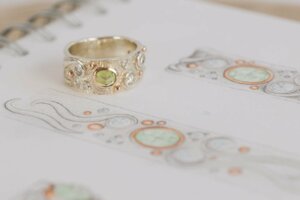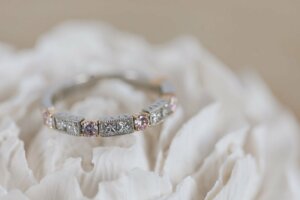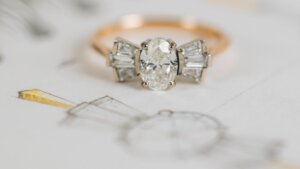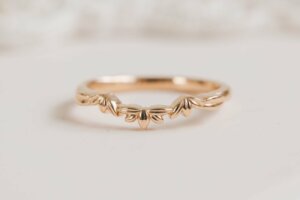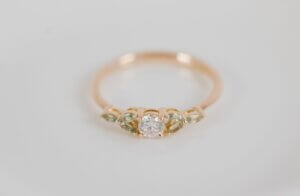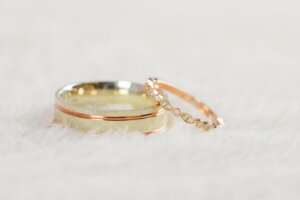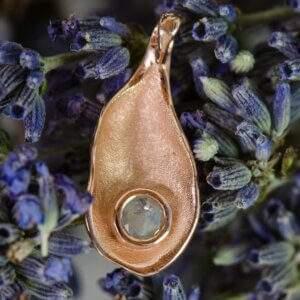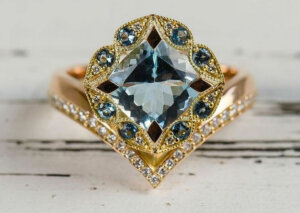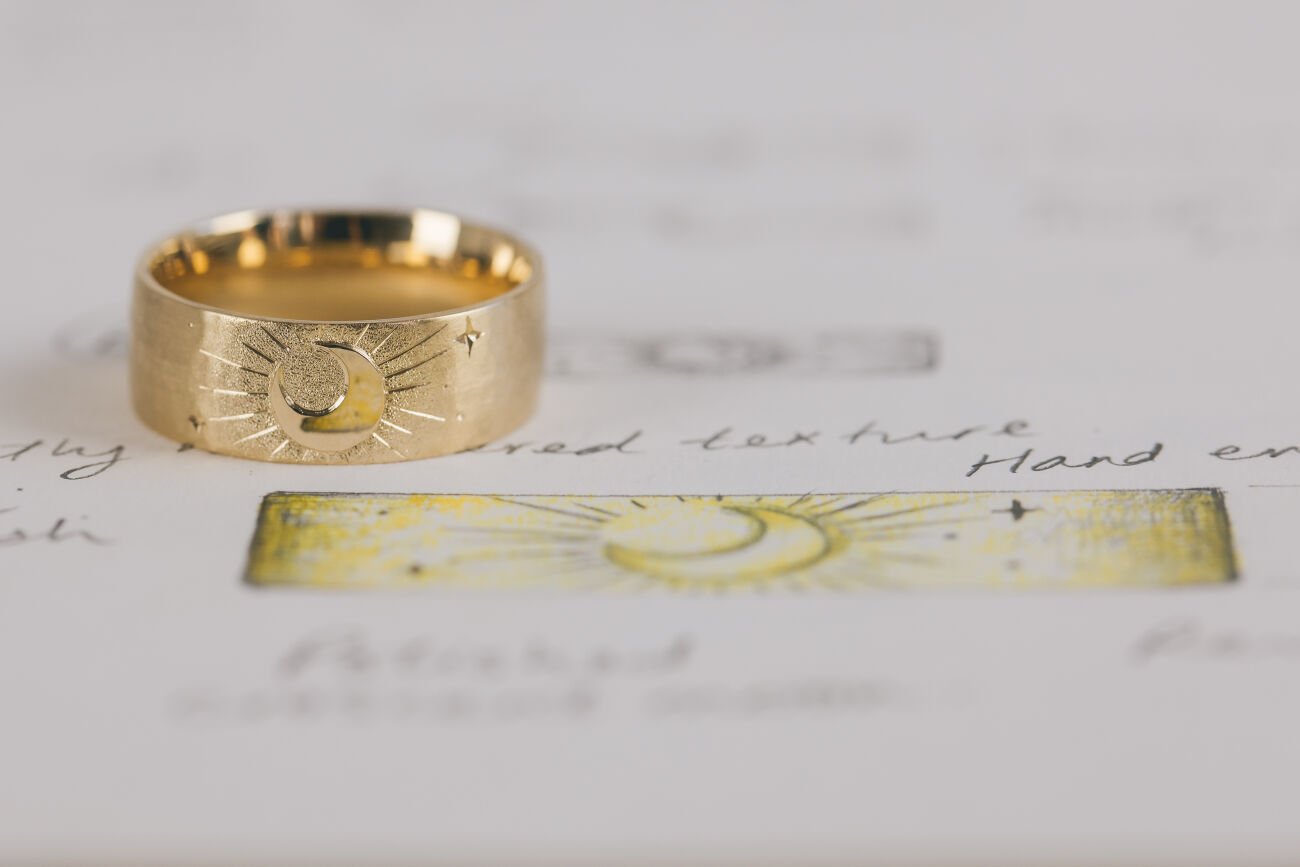
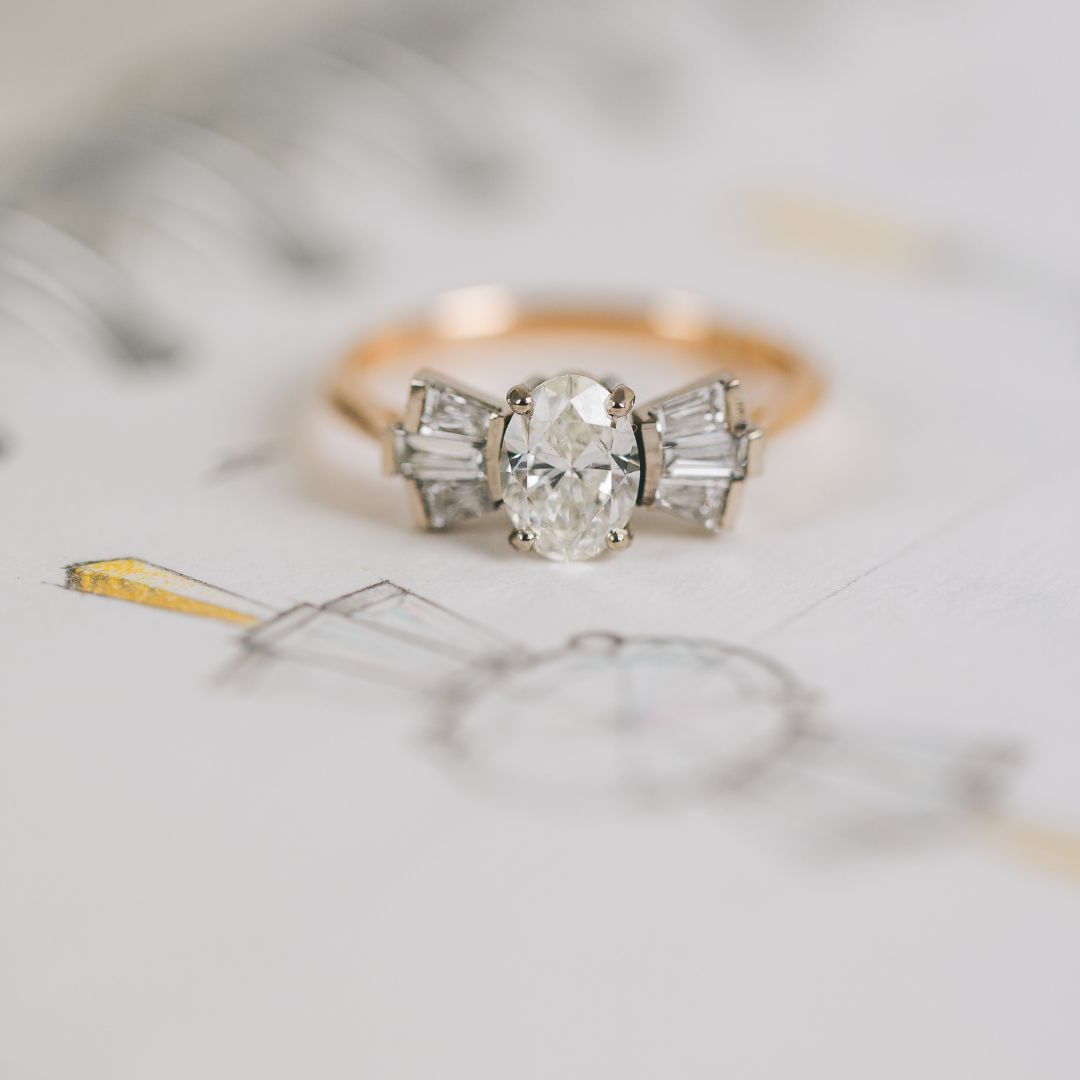
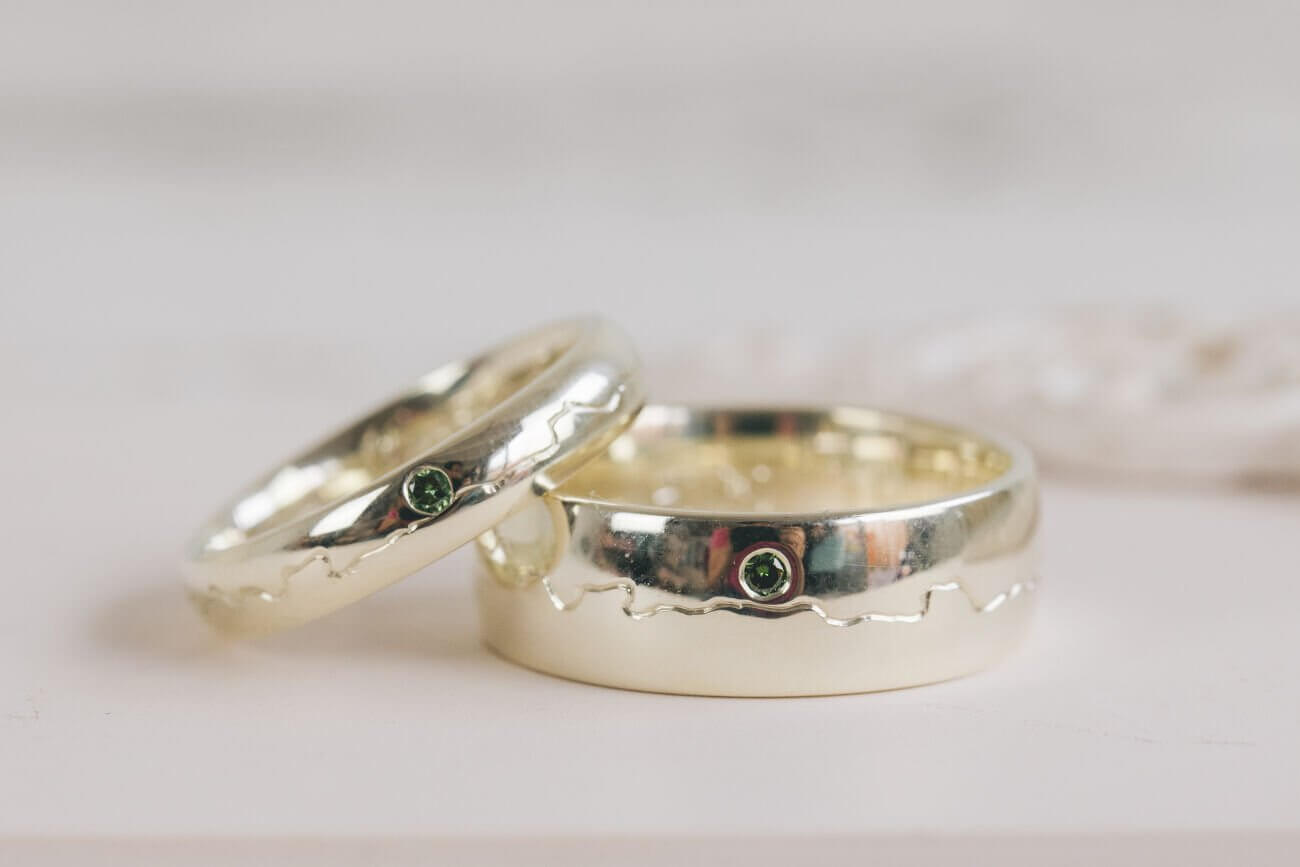
Gold Facts:
- Gold is seen as the traditional option for jewellery.
- It comes in a range of colours, some more well known (yellow, white and rose) and used than others (black, blue, purple and green!)
- Gold’s chemical symbol, Au, is short for the Latin word for gold, ‘Aurum’, which literally means ‘Glowing Dawn’.
Carats of Gold
Let’s start by looking at the makeup of gold used in jewellery in the UK. When you buy gold jewellery, it is not pure gold. This is because pure gold is considered too soft for both setting gemstones and to stand up to normal wear and tear through use. Jewellers discuss the quality of the gold by discussing it terms of 24 parts or carats – shortened to ct, so for example 18ct or 9ct. Greater durability is achieved by mixing 24ct gold with other metals to form an alloy. This is also how different coloured golds are created.
9ct gold
Whether white, rose or yellow, 9ct gold has 9 parts out of 24 pure gold. The other 15 parts are made up of other metals such as silver, copper and palladium. The metals it is mixed with determines the colour it appears. This composition equates to 37.5% pure gold which is why 9ct gold is hallmarked with the number 375 (375 parts out of 1000).
18ct gold
18ct gold is marked with the number 750 as is it made up with 18 out of 24 parts pure gold (or 75%)
Read on below to find out more about each colour of gold, or learn more about this fascinating metal in my blog on gold.
Yellow Gold
Yellow Gold Facts:
- The classic choice, yellow gold has a timeless appeal.
- Yellow gold is true to its natural beginnings and how it looks fresh out of the ground – gold is yellow!
- Yellow gold looks fantastic with white stones like diamonds as it contrasts them. It also works well with warm coloured stones for a fiery look or as a bold contrast to cool coloured stones.
More about Yellow Gold
As you can see in the image above, 9ct yellow gold has a paler, more subtle yellow hue than the brighter, bolder 18ct yellow gold. This is because it has a larger amount of its alloy made up from metals other than gold, which water it down and reduce the golden tone. Although price tag plays an obvious part in deciding on a metal for a piece of jewellery, but it’s also worth comparing how different carats compliment your skin tone and the colour of any gemstones included in the design.
White Gold
White Gold Facts:
- White gold is made through the addition of white metals to the naturally yellow gold.
- On the high street, white gold is always rhodium plated to give it a cool, steely whiteness like Platinum, but it does not need to be plated and I advocate opting not to plate it in order to appreciate it’s natural beauty.
More about White Gold
A lot of jewellers rhodium plate white gold as standard so only very rarely do you get to see the real colour of it. The images above show the difference in colour between 9ct white gold on the left, 18ct in the centre and rhodium plated white gold on the right. The natural colour of 9ct white gold has a lovely creamy hue, subtly less yellow than 9ct yellow gold. 18ct white gold has a darker, almost gun metal tone.
You can get away with less ‘white’ diamonds in un-plated white gold as any yellow hints will not contrast as much as plated white gold or Platinum and Palladium. But think carefully about which style of setting you choose as accent stones in un-plated white gold; diamonds set in the pavé style can look a little odd in un-plated white gold. Pavé settings give the metal an all-over sparkle and can give the impression that more accent stones have been used, however if the colour of the stone contrasts with the colour of the metal, you can clearly see where each one is.
The truth about White Gold on the high street
Most high street jewellers will always rhodium plate their white gold jewellery, which has caused a lot of confusion for the consumer as the white gold jewellery looks exactly the same as Platinum and Palladium! Rhodium is from the same family of metals as Platinum and Palladium and some jewellers would argue that white gold has to be plated in order to add durability as well as make it a more attractive colour. I, however, love the natural colour of white gold. I’m of the opinion that all materials are better in their natural form and that plating metal causes a lifetime of trips back to the jewellers to have it re-plated as it inevitably wears off.
What a lot of people mistake for tarnishing on their white gold jewellery is in fact the true colour of the metal showing through the plating as it wears. Plating metal only coats it in a microns thick coating, so this will eventually rub off where the jewellery comes into contact with everything else. Read more on this subject in my blog all about white gold.
Cost wise, white gold is more expensive than yellow gold as the alloys used to produce the white colour are more expensive due to their scarcity. White gold was brought into vogue in the 1920s so can be seen as a more modern option in comparison to yellow gold.
Prior to Palladium becoming a recognised precious metal, white gold seemed to be viewed as Platinum’s poor relation; if you couldn’t afford Platinum, you’d opt for white gold. If you agree with me on the plating issue, then I’m sure you’ll also agree that white gold should not be seen in this way; it is a beautiful metal that should be enjoyed in it’s natural colour and gives a great warmer white alternative to the cool whites of Palladium and Platinum.
Rose Gold
Rose Gold Facts:
- Can also be called red or pink gold.
- Rose gold gets its colour from its copper content.
- 9ct Rose gold has a more coppery appearance.
- 18ct Rose gold is closer to yellow gold in colour.
More about Rose Gold
Rose gold has gained popularity in recent years as an alternative to white metals and yellow gold. It has become particularly fashionable for watches. Its rich coppery tones compliment most skin tones and work with all colours of stones. Just like yellow gold, rose gold contrasts beautifully against diamonds. If you like Autumnal colours, consider using Rose gold as the backdrop to orange, red, yellow and brown gemstones. Alternatively, choose purple, blue or green stones for a stunning contrast.
Rose gold gets its colour from the copper the pure yellow gold is mixed with. 9ct gold has 9 parts pure gold mixed with 15 parts of other metals (mostly copper). 18ct rose gold is much closer visually to yellow gold as it has double the amount of ‘pure’ gold it in its makeup. So if you love the coppery look, go for 9ct but if you want a more subtle variation from yellow gold, opt for 18ct.


